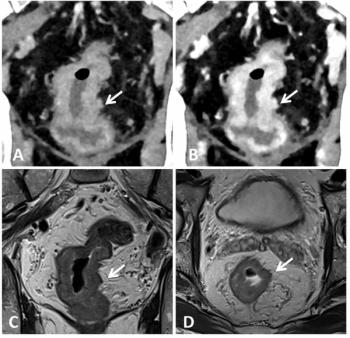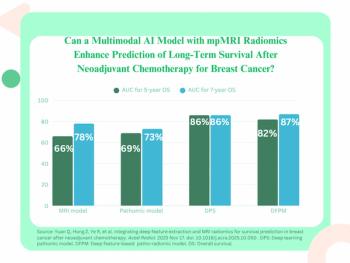
MRI detects occult breast cancer in Paget’s disease patients
Women with Paget’s disease of the nipple can be more assured that MRI will detect otherwise hidden malignancies, leading to opportunities for breast conserving therapy, following research from the Memorial Sloan-Kettering Cancer Center in New York City.
Women with Paget's disease of the nipple can be more assured that MRI will detect otherwise hidden malignancies, leading to opportunities for breast conserving therapy, following research from the Memorial Sloan-Kettering Cancer Center in New York City.
Paget's disease of the nipple is a rare type of carcinoma that presents clinically on the skin's surface. Symptoms can include an eczema-like scaling or rash, inflammation of the areola, fluid discharge, or inversion of the nipple. Diagnosis is confirmed by nipple biopsy, and about 95% of cases are associated with an underlying breast cancer.
The study involved surgically identified breast cancer in 32 of 34 (94%) Paget's disease patients evaluated at MSKCC from 1995 to 2006. Seven involved invasive ductal carcinoma, and 25 were ductal carcinoma in situ, with 19 of the cancers confined to the central quadrant of the breast.
Results were published in the February Journal of the American College of Surgeons (2008;206[2]:316-321).
Senior author Dr. Tari A. King and colleagues found that MRI effectively diagnosed carcinomas that mammography had missed. Diagnostic mammography performed on all 34 patients detected 11 cancers and accurately demonstrated the extent of disease in nine of 11 patients. MRI performed on 13 patients detected seven cancers and revealed the extent of disease in six of seven patients. In combination, mammography and MRI detected 15 (49%) of the malignancies.
MRI did not influence patient management when performed after positive mammography, but it proved valuable when initial diagnostic mammography was negative, King said. In such instances, MRI detected occult disease in four of eight patients. It was 100% sensitive in characterizing the extent of disease and ruled out the presence of cancer for one patient. In several instances, MRI findings allowed surgeons to perform lumpectomy rather than mastectomy, the standard treatment for women with Paget's disease.
"If the breast cancer is confined to the area behind the nipple, central lumpectomy with removal of the nipple areolar complex may be an attractive option for the patient. If this can be achieved with a negative margin, breast conservation (lumpectomy and whole-breast radiation therapy) may be performed," King said.
Newsletter
Stay at the forefront of radiology with the Diagnostic Imaging newsletter, delivering the latest news, clinical insights, and imaging advancements for today’s radiologists.




























